My Thoughts On Moulding & Millwork
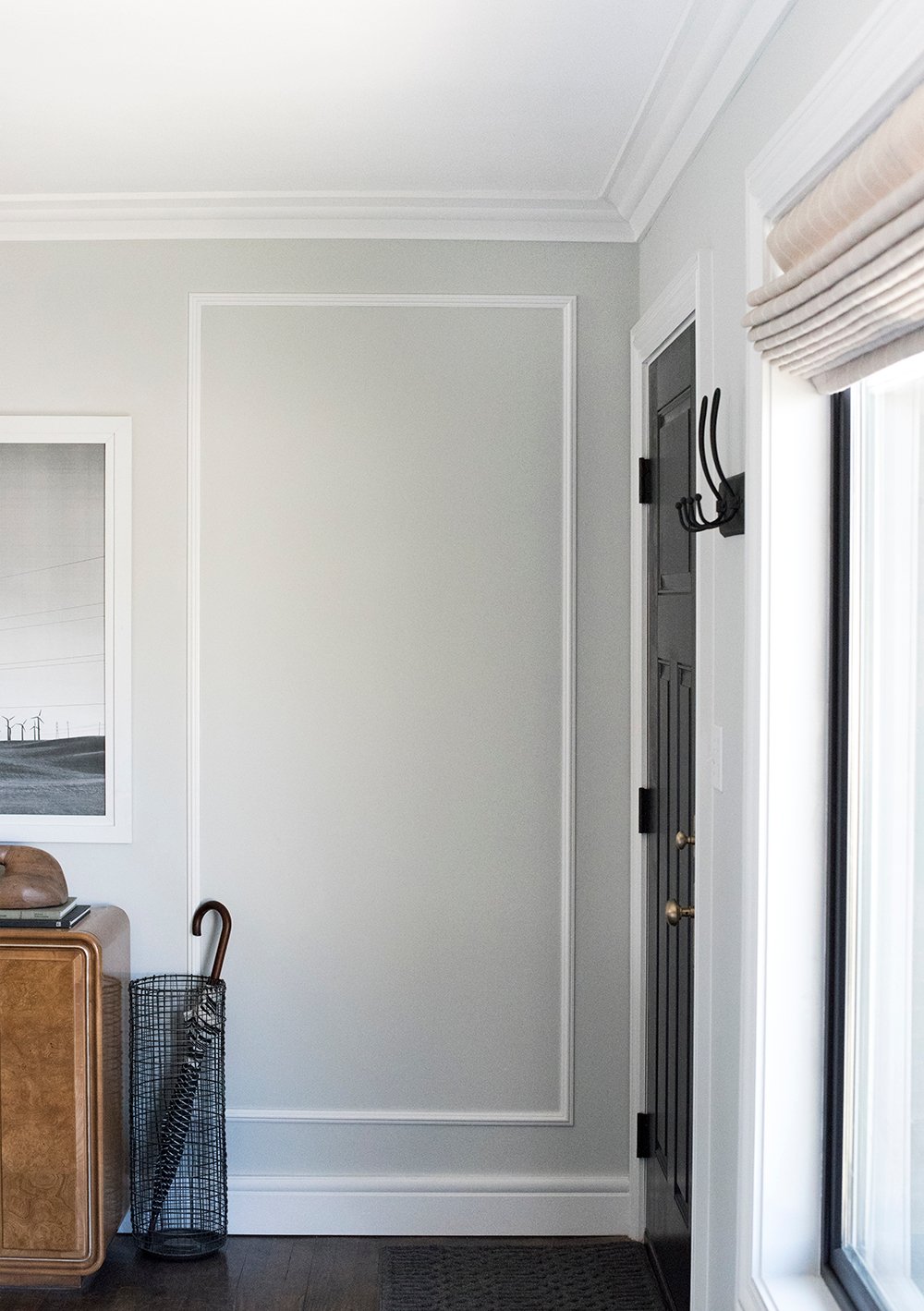 Moulding and millwork make a HUGE difference in a home- especially when your house is pretty basic or architecturally uninteresting (like mine). It’s an easy way to add personality, depth, and highlight specific areas throughout your home. It also makes your a space look 100 times more custom and expensive than it actually is. So what’s the downside and why isn’t everyone adding millwork to their home? It’s not so great when done incorrectly. Click through for tips on adding moulding and ways to avoid rookie mistakes (aka my pet peeves). Disclaimer: this is a lengthy and opinionated post that could potentially get controversial, but I’m hoping it will be helpful for someone selecting millwork for their home!
Moulding and millwork make a HUGE difference in a home- especially when your house is pretty basic or architecturally uninteresting (like mine). It’s an easy way to add personality, depth, and highlight specific areas throughout your home. It also makes your a space look 100 times more custom and expensive than it actually is. So what’s the downside and why isn’t everyone adding millwork to their home? It’s not so great when done incorrectly. Click through for tips on adding moulding and ways to avoid rookie mistakes (aka my pet peeves). Disclaimer: this is a lengthy and opinionated post that could potentially get controversial, but I’m hoping it will be helpful for someone selecting millwork for their home!
This post sort of spawned from “Decor Tip Tuesday” on Instagram a few weeks back- it’s actually saved under ‘millwork’ if you want to go watch it. I got SO many questions about this, I thought it warranted an entire post. I participated in a millwork class a few years back that seriously changed my outlook on designing architectural details and trim. It boils down to this…. balance, proportion, mathematics, and aesthetic. If all four aren’t working together, you’re not going to get a great end result.
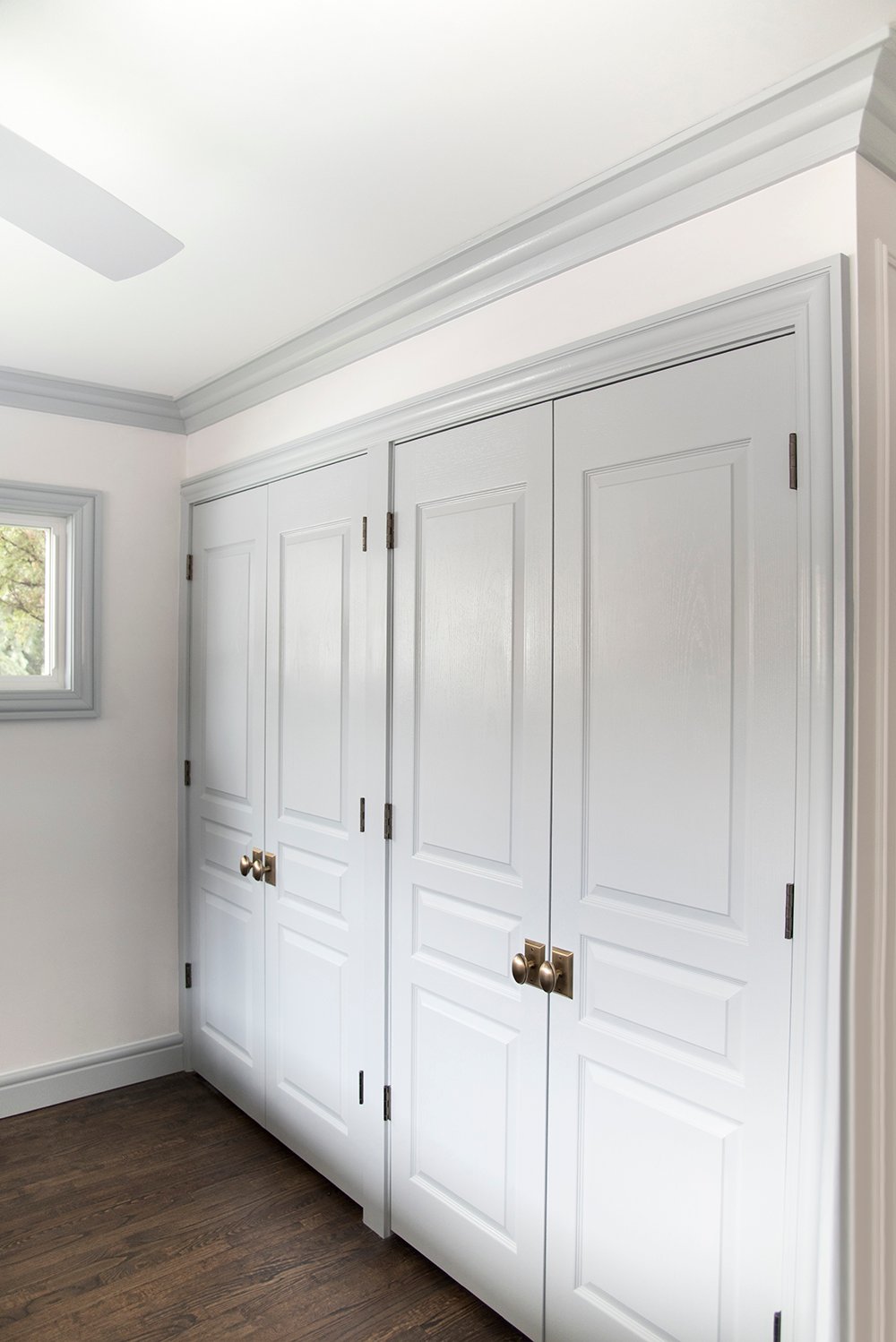 Without writing a novel / history lesson on the architectural integrity of millwork, I’m going to try to keep this post relevant for today, and use simple terms that are easy to understand. Normally, I’m a giant advocate for DIY projects, but millwork is something you really have to be informed on prior to diving in. Finishing carpentry and millwork is a very classical skill (a true art form) that is kind of being lost to DIY, in my personal opinion. I’m not discouraging anyone from taking the DIY route (we installed our own millwork), but hopefully this post will make it easier to decide what look best fits your home.
Without writing a novel / history lesson on the architectural integrity of millwork, I’m going to try to keep this post relevant for today, and use simple terms that are easy to understand. Normally, I’m a giant advocate for DIY projects, but millwork is something you really have to be informed on prior to diving in. Finishing carpentry and millwork is a very classical skill (a true art form) that is kind of being lost to DIY, in my personal opinion. I’m not discouraging anyone from taking the DIY route (we installed our own millwork), but hopefully this post will make it easier to decide what look best fits your home.
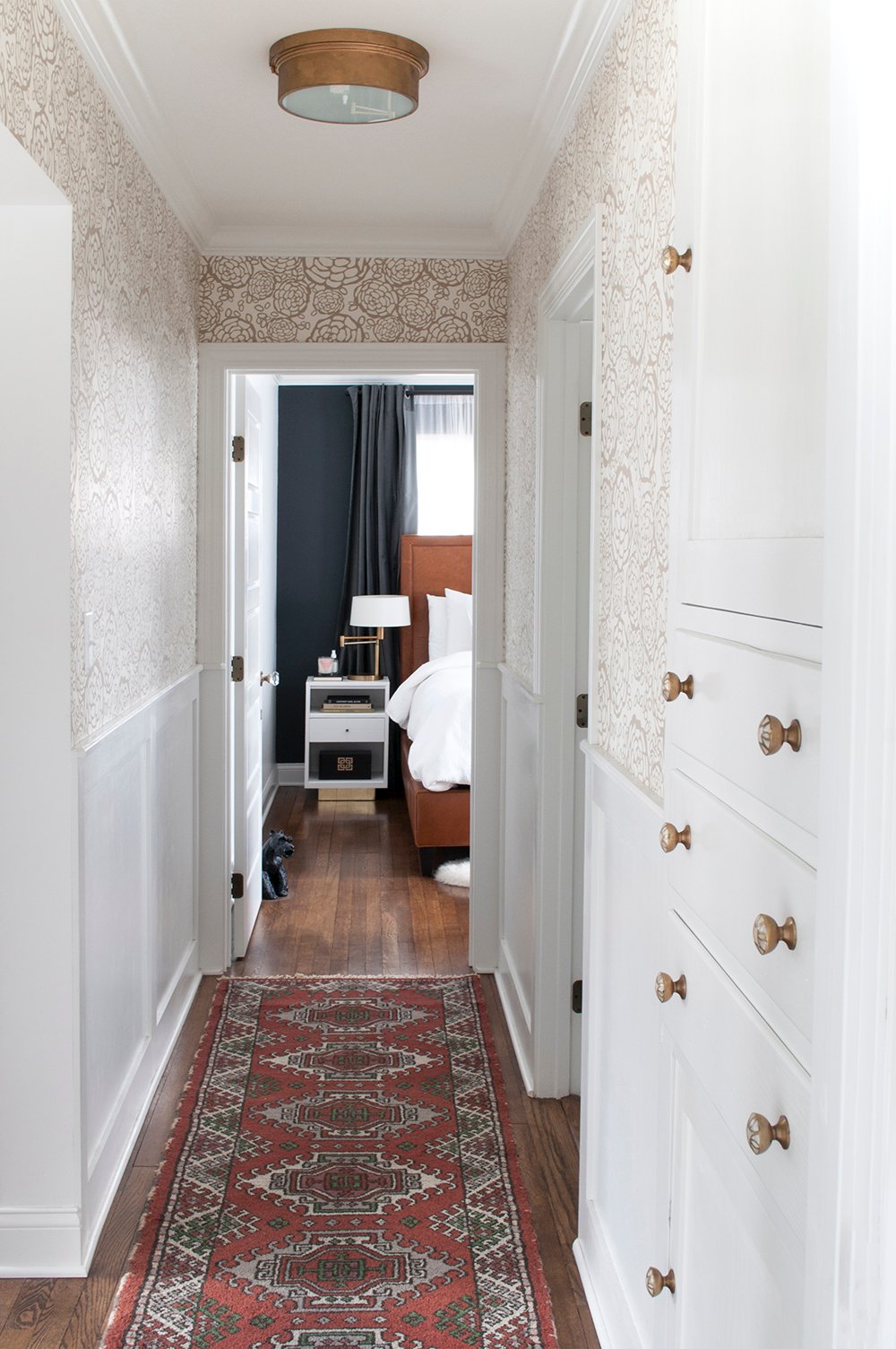 So many people slap up trim without actually knowing how it is supposed to look, and the result is less than satisfactory. To the untrained eye, it might look fine… but I cringe when I see wainscoting or board and batten that travels three quarters of the way up a wall, or fireplaces trimmed with heavy dental moulding in a space with standard height ceilings. Is that a snobby attitude? I don’t think so. It’s like telling a mathematician that the solution to 2+2 equals 5. There IS a correct answer and the one in front of you is inaccurate. Millwork isn’t a factor that’s a matter of taste or personal preference (like art)… it’s a formula that has a very specific solution.
So many people slap up trim without actually knowing how it is supposed to look, and the result is less than satisfactory. To the untrained eye, it might look fine… but I cringe when I see wainscoting or board and batten that travels three quarters of the way up a wall, or fireplaces trimmed with heavy dental moulding in a space with standard height ceilings. Is that a snobby attitude? I don’t think so. It’s like telling a mathematician that the solution to 2+2 equals 5. There IS a correct answer and the one in front of you is inaccurate. Millwork isn’t a factor that’s a matter of taste or personal preference (like art)… it’s a formula that has a very specific solution.
T H E P U R P O S E O F M I L L W O R K
The purpose of moulding isn’t to structurally support your home. That seems obvious. If you removed the casing, crown moulding, baseboard, and any other existing trim, the entire house wouldn’t come crashing down. So what exactly does moulding do if it’s not functional? What’s the point?
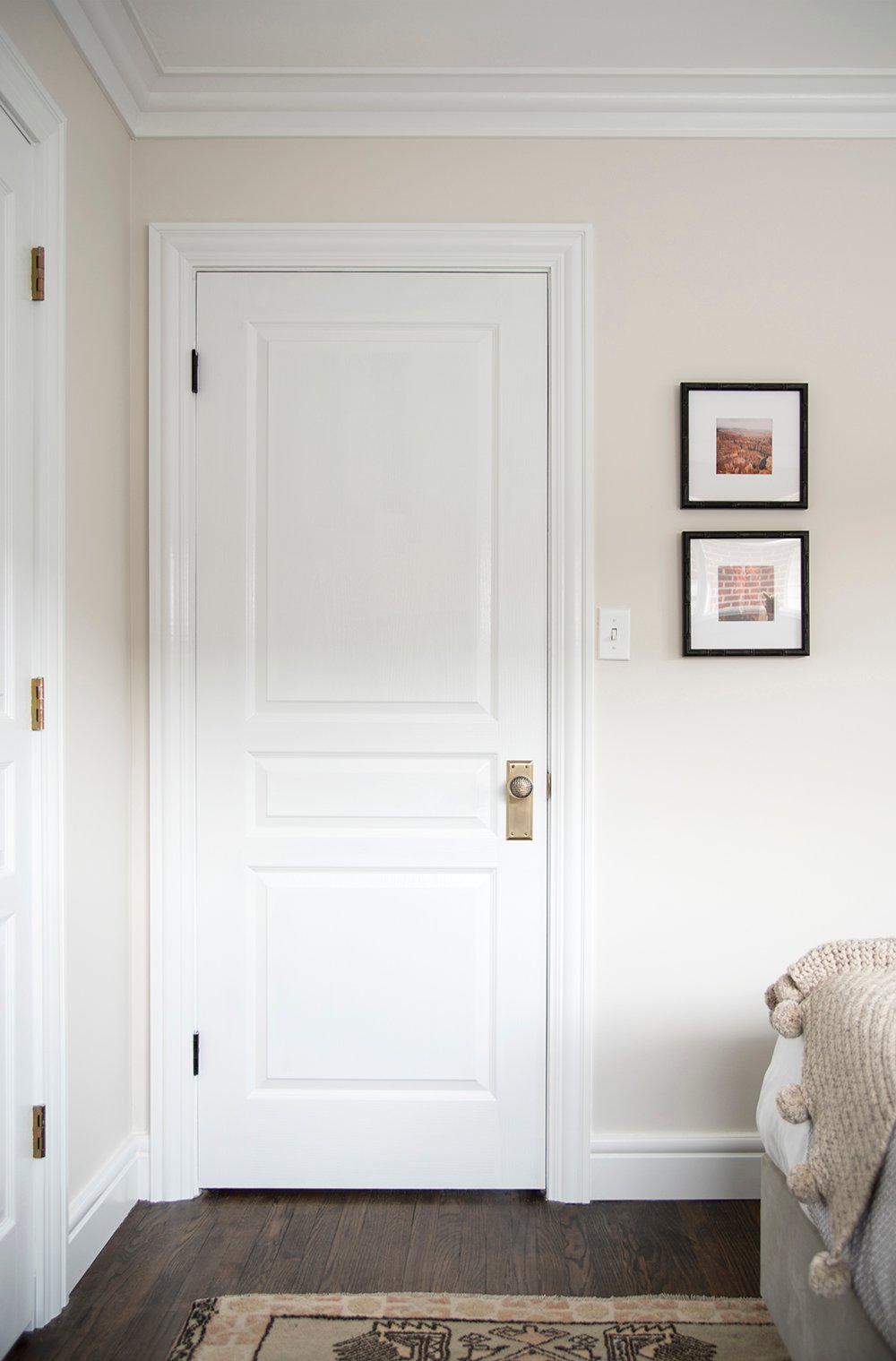 It makes a space feel secure, balanced, sturdy, and well-constructed- not to mention, it’s beautiful. It’s definitely an aesthetic element that contributes to the integrity of a home. To give you a silly example… think of a big room shaped like a shoebox: 4 walls, a ceiling, and a floor. You walk into the room, it seems/looks fine, now let’s imagine a wind storm is rolling in. You’re in the space and can hear the wind gusting on the opposing side of the wall. Take this same example and apply moulding… crown moulding, baseboard, panel moulding, columns (if the ceiling is super tall), etc. It feels and looks reinforced or safe… even if the millwork is providing no real structural support. It’s all about that feeling. It doesn’t take a wind storm to give you that feeling or lack thereof. If you walk into a home with millwork, it just looks more secure, appealing, and comfortable.
It makes a space feel secure, balanced, sturdy, and well-constructed- not to mention, it’s beautiful. It’s definitely an aesthetic element that contributes to the integrity of a home. To give you a silly example… think of a big room shaped like a shoebox: 4 walls, a ceiling, and a floor. You walk into the room, it seems/looks fine, now let’s imagine a wind storm is rolling in. You’re in the space and can hear the wind gusting on the opposing side of the wall. Take this same example and apply moulding… crown moulding, baseboard, panel moulding, columns (if the ceiling is super tall), etc. It feels and looks reinforced or safe… even if the millwork is providing no real structural support. It’s all about that feeling. It doesn’t take a wind storm to give you that feeling or lack thereof. If you walk into a home with millwork, it just looks more secure, appealing, and comfortable.
It’s not something we consciously think about or notice feeling until after learning about millwork (at least in my experience). Most people feel more comfortable in homes with moulding and that’s why. The same goes for moulding that has been installed of the WRONG proportions… it can make you feel uneasy if it doesn’t add up / serve it’s purpose.
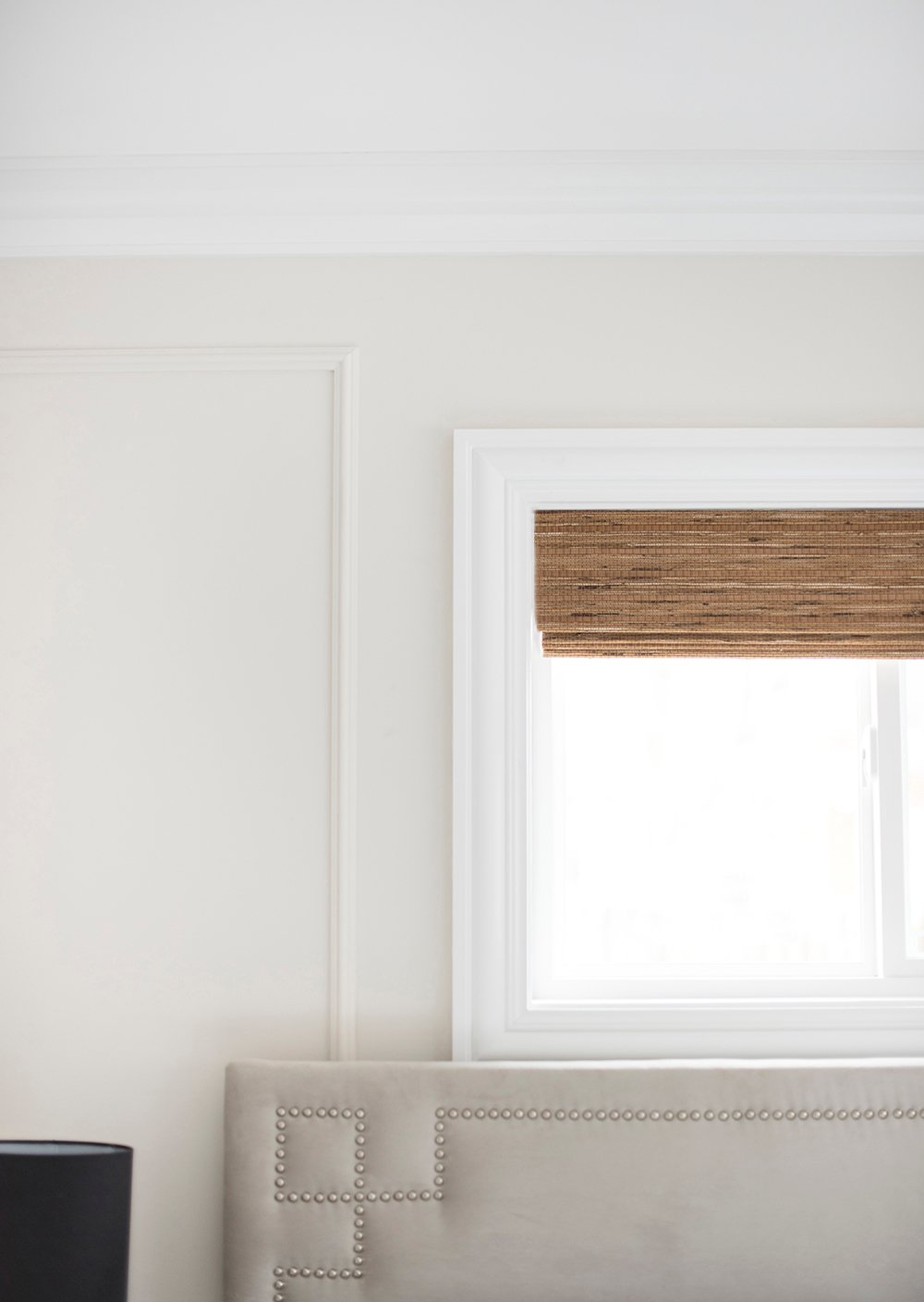
T H E E Q U A T I O N
Ok, so you want millwork because it’s beautiful and makes you feel at ease, but how do you get it right? Greek and Roman orders of architecture can help establish moulding size and placement. That might sound archaic, but it’s true. This article does a really fantastic job explaining it. Seriously- go read it! It sort of sums up the class I took.
I don’t want to bore those who are uninterested in this topic, so instead I’ll link some books I’d recommend if you want to learn more (we own all three): Historic Millwork: A Guide to Restoring and Recreating Doors, Windows, and Moldings // Get Your House Right // Carpenter’s Assistant
AESTHETIC: Make sure sure the style of the millwork selected matches the architecture and aesthetic of your home. One thing is certain- make sure when installing, your home is consistent throughout! The baseboard, crown, and casing should all feel cohesive and proportionate.
BALANCE + PROPORTION: When planning your millwork, make sure to apply the pythagorean theorem and orders of Greek & Roman architecture (linked above). It’s all one big mathematical equation that will achieve balance. If you’re not a math person (like me), a more simplistic way to think about it, is by breaking your wall into thirds or triangles. Planning and sketching is definitely essential in “getting it right”.

R O O K I E M I S T A K E S
I cringe when I see millwork installed improperly. I decided to make a list of my pet peeves below, so that you guys can avoid these rookie mistakes:
- Non-mitered corners // When I see corner pieces or rosettes instead of a beautiful miter in the corner of a room, it ruins the entire look. Seriously, that’s the lazy route and I hate the way it looks.
- Separating joints // As houses settle, expand and contract with humidity, sometimes mitered edges can separate (think hairline fracture). That’s normal, minimal, and totally ok! Odds are it will expand and contract forever. However, sometimes there are giant gaps at the miter that is the direct result of poor carpentry or execution. I’d rather see no moulding at all, than moulding poorly installed that doesn’t align. Hire a finishing carpenter if you’re aren’t confident in your skills… this is advanced carpentry work that can make or a break your space.
- Moulding that is painted the wrong color // Although I do like the monochromatic look, I personally prefer contrast. Even if your moulding is the same color as your wall (which does look amazing when done properly), at the very least, choose a different finish. It will add depth and accentuate the moulding in a good way!
- Millwork that doesn’t match the aesthetic of the home // You have to consider the architecture and aesthetic of your home when selecting millwork. It makes zero sense to put flat, craftsman style moulding in an ornate victorian house. I hate seeing that!! You always want the millwork to feel organic, like it belongs, and could be original.
- Non cohesive collections // I also hate seeing baseboards that don’t match the crown moulding, stylistically. Make sure you choose a collection of trim (panel moulding, crown, base, casing, etc) that is balanced and feels cohesive. If you’re doing a chunky baseboard, a slender crown moulding isn’t going to look right.
- Moulding that is out of proportion // Classic proportions make attractive trim- use the equation! That’s what the entire upper section of this post highlighted. Wainscoting should not travel three quarters of the way up your wall… that is not the correct proportion according to the equation and order.
I wanted to share some bad examples, but the more I thought about pulling images that were done incorrectly that weren’t my own, it felt kind of wrong / mean. Do you think that would be helpful though? Maybe I’ll plop some ‘what not to do’ images onto my Insta story? They’ll disappear after a day anyway. I’m visual person- so for me, that’s how I learn.
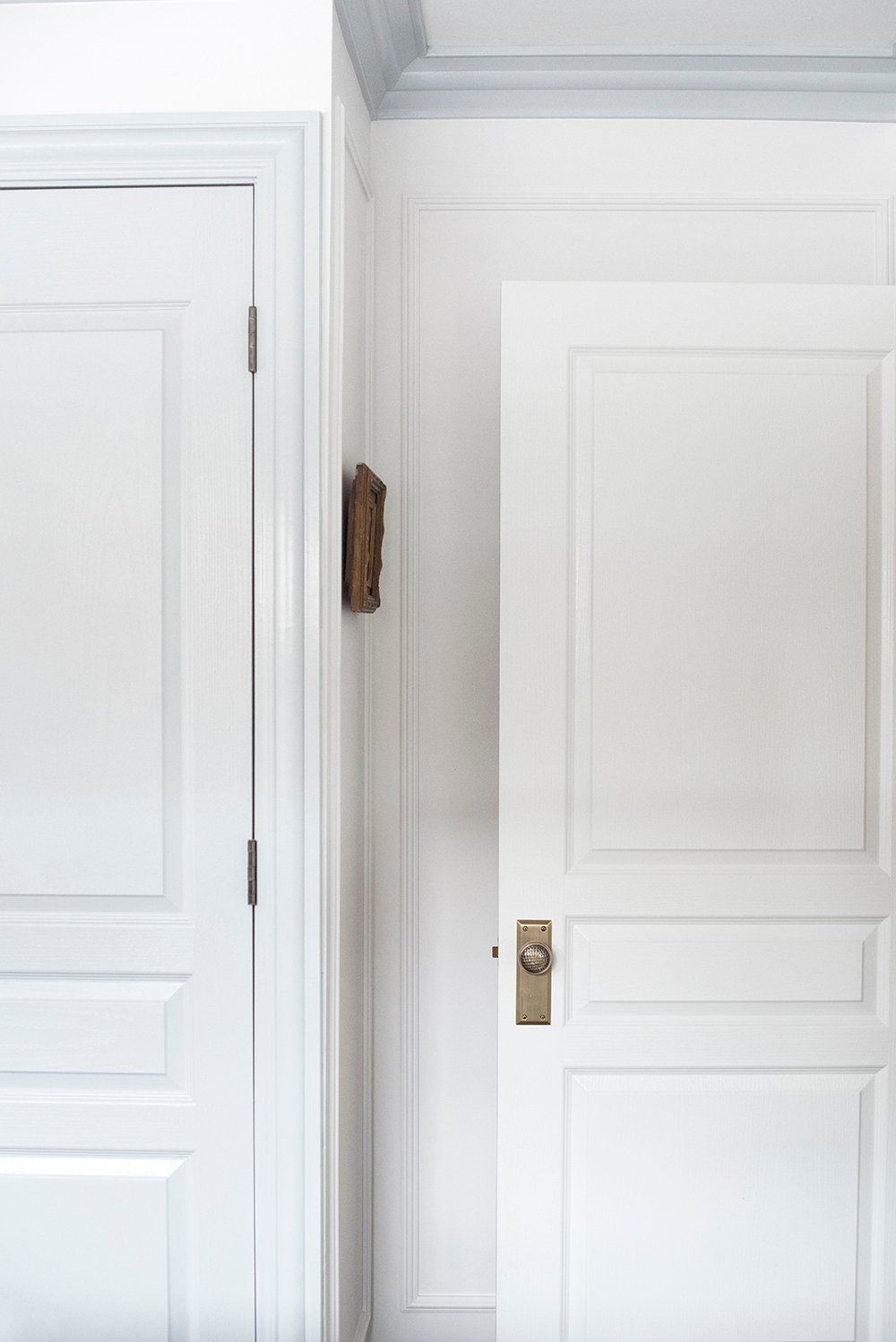
M L L W O R K I N M Y H O M E
If you’re wondering how I selected the millwork for my home, it was by following the above principles. We live in an architecturally basic / boring home and therefore, I had to keep it pretty straightforward and simple. As much as I love beefy, ornate mouldings, it wouldn’t make any sense in our home that has standard ceilings and zero character throughout.
So far, we’ve installed the following (each specific product is linked):
- crown moulding
- baseboards
- panel moulding
- casing
- built-ins
- updated fireplace
- …we still need to add the shoe moulding (aka quarter round) throughout the entire home
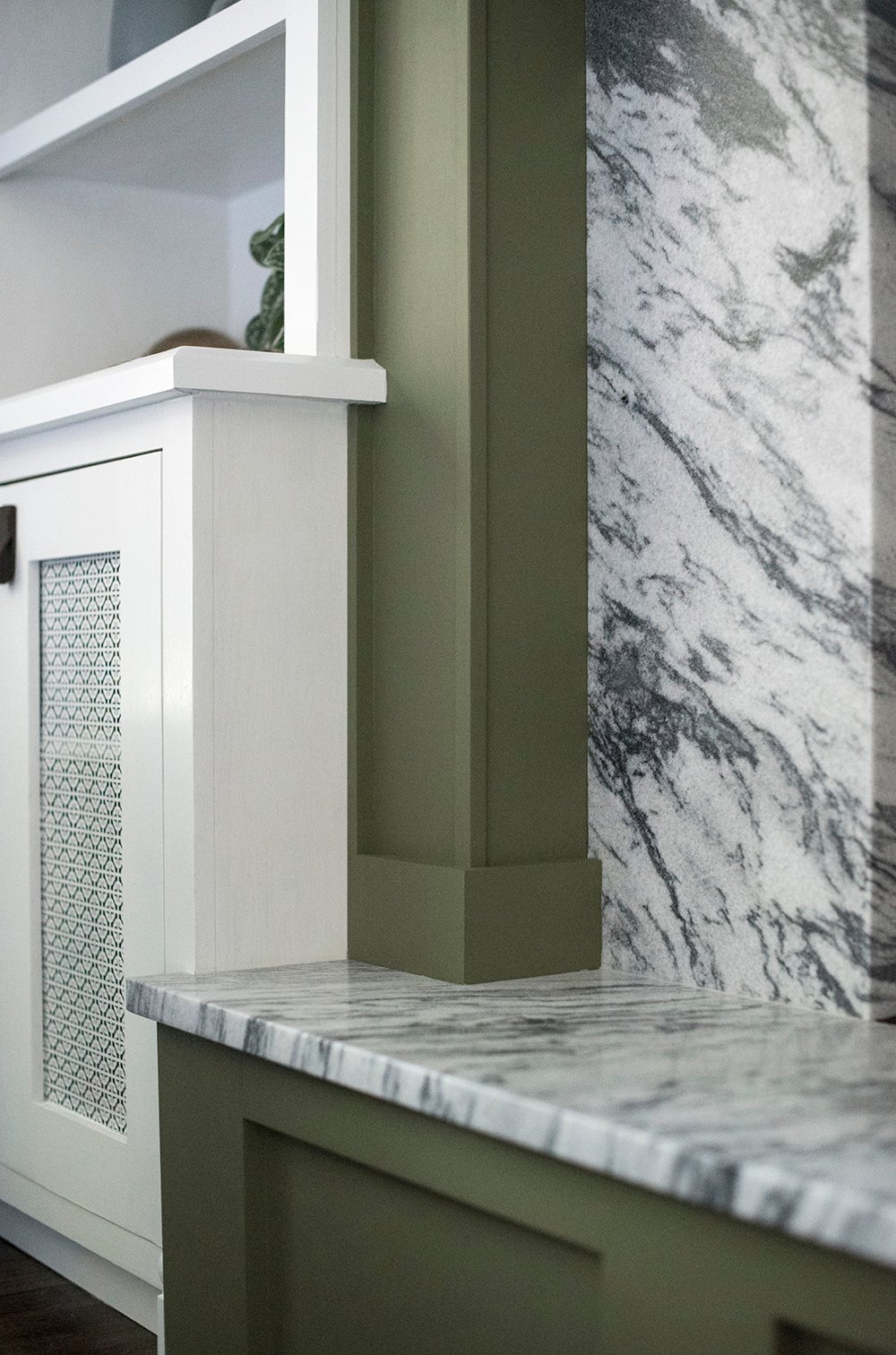 I opted for a transitional style. To be honest, I probably pushed the design limit a bit, given we live in a ranch style home (that I hate). Traditionally, our trim could’ve been even more streamlined and modern. Our hope is to eventually add a garage and bathroom, which would change the existing architecture and exterior aesthetic- that would certainly influence the mouldings throughout.
I opted for a transitional style. To be honest, I probably pushed the design limit a bit, given we live in a ranch style home (that I hate). Traditionally, our trim could’ve been even more streamlined and modern. Our hope is to eventually add a garage and bathroom, which would change the existing architecture and exterior aesthetic- that would certainly influence the mouldings throughout.
For our first home, I worked alongside a super amazing 70 year old finishing carpenter (shoutout to my man, Les!) who knew everything about everything when it came to millwork. I’m glad I didn’t do it alone because I totally wouldn’t have known about the formula and carpentry equations at that point in time.
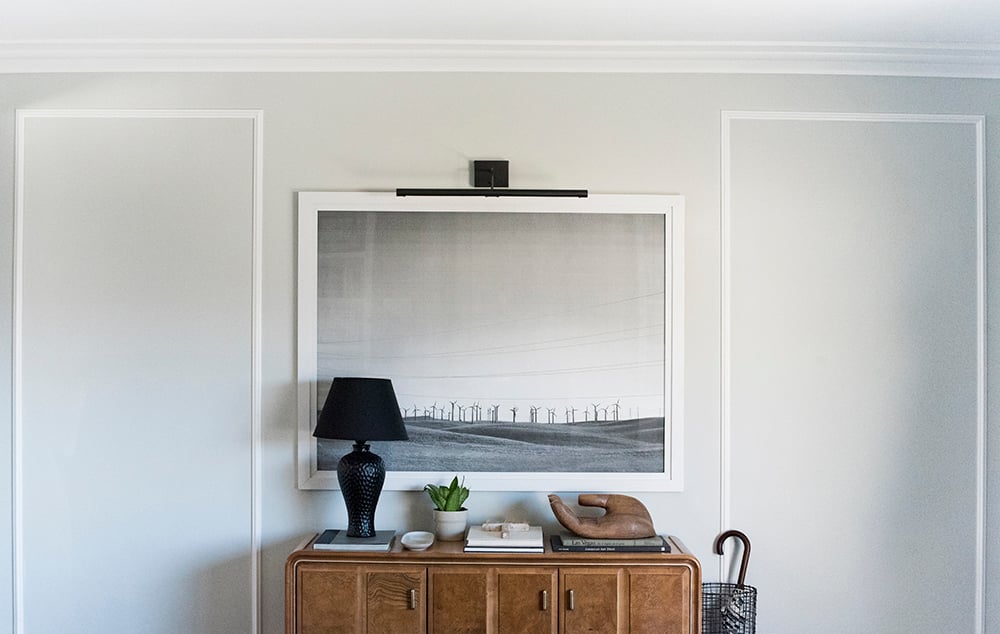
H O W T O C H O O S E M O U L D I N G S
Hopefully this section will make your decision easier! There’s a lot to think about when it comes to adding trim…
QUESTIONS TO ASK:
- How important is durability? Do you have dogs or children? Is there a good chance your pets or kids might damage your trim or scratch at your baseboards? If the answer is yes, you might want to choose a solid wood material as opposed to MDF.
- What is the aesthetic of my home? If you live in a modern farmhouse, flat paneled trim would be best suited for your project… anything overly intricate wouldn’t be a great match. Consider what would feel original to the home!
- What is the budget for the project? If you have limited funds, you might opt to only add baseboard and casing, then forego other items like crown moulding, panel moulding, etc. Or maybe you choose an MDF material instead of solid wood because it’s less expensive.
- Will this be professionally installed? If you’re not an experienced carpenter, it may be worth it to hire a professional. You’ll need to factor that into the budget. Trust me when I say Emmett ruined plenty of trim while he was learning to install millwork (it’s tough), so if you’re taking the DIY route, you’ll want to order plenty of overage.
- Do I want the trim to be emphasized or understated? This will influence the size, color, and finish of the moulding.
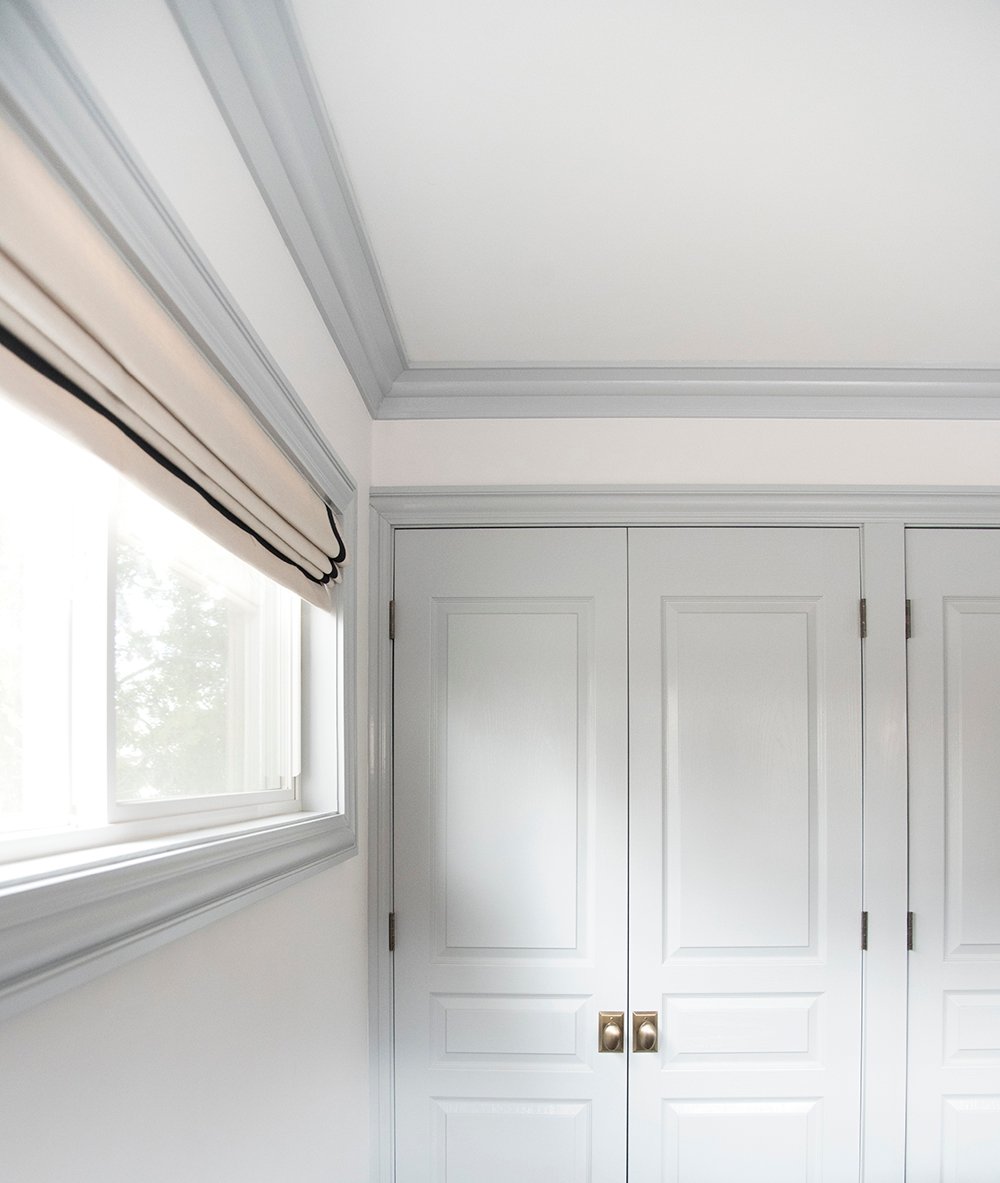 If you’re feeling worried about committing to a style, think of what the original trim in your home might’ve looked like. If you’re not sure, look for homes that are similar architecturally. Original, historic homes typically got it right. Updated, builder-grade homes are typically a different story (not all of them, but a lot of them anyway). On those projects, you’ll need to start from scratch because there’s a good chance it’s not accurate.
If you’re feeling worried about committing to a style, think of what the original trim in your home might’ve looked like. If you’re not sure, look for homes that are similar architecturally. Original, historic homes typically got it right. Updated, builder-grade homes are typically a different story (not all of them, but a lot of them anyway). On those projects, you’ll need to start from scratch because there’s a good chance it’s not accurate.
PLACE THE ORDER:
- Decide on the style.
- Choose the material (we opted for pre-primed MDF, but solid wood is more durable / high end).
- Choose how much millwork you’ll be adding (casing, base, crown, panel moulding, quarter round, etc).
- Plan and sketch how it will be applied (use the formula for proportion).
- Crunch the numbers for quantity (and include overage).
- Order a sample (if applicable).
- Make the purchase and install!
In the end… if this sounds confusing to you and you’re feeling nervous to make moulding decisions for your home, my biggest tip is to consult with a designer or skilled finishing carpenter. I’m not saying the DIY route can’t be done, but knowing when to DIY or hire a professional is an important asset- and trust me when I say, this is not an element you want to chance messing up. Either do your research or leave it to the pros.
 I hope you don’t want to murder me after that. Was that information overload? I got carried away, and I hope you’re not all bored to death! I personally find this topic really interesting, so I could talk about it all day. I thought it might be helpful for those asking, “What millwork should I choose for my home?” Sadly, there’s not a short, ‘one size fits all’ answer, but hopefully this will give you the tools and info to feel more confident in your decision!
I hope you don’t want to murder me after that. Was that information overload? I got carried away, and I hope you’re not all bored to death! I personally find this topic really interesting, so I could talk about it all day. I thought it might be helpful for those asking, “What millwork should I choose for my home?” Sadly, there’s not a short, ‘one size fits all’ answer, but hopefully this will give you the tools and info to feel more confident in your decision!
One last tidbit… “mouldings” can also be spelled “moldings”. It’s the English way vs. the American way… I have no idea why I’ve always stuck with the English spelling- it just feels right to me. Ha! Questions, thoughts, conversation? Do you agree or disagree that there is a specific formula to this art? Comment below!!
